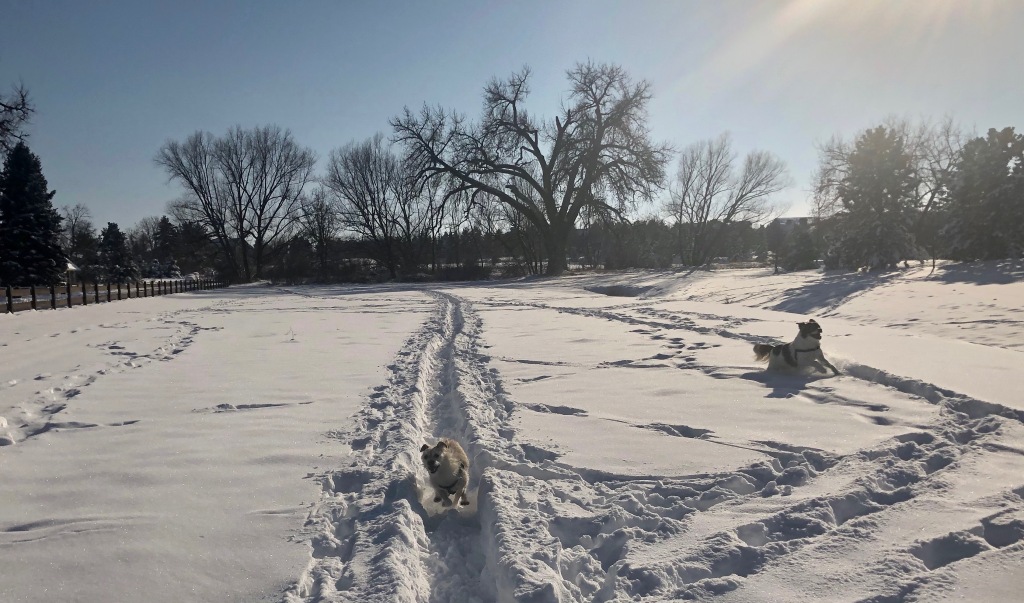
It’s a snowy day in Colorado and has been for the better part of a week.
Richelle, Helen, and I traded Thanksgiving-week celebrations for a pre-holiday trip to Ireland. No motorcycles on that one, just a strange little Nissan Pulsar, but it was a grand adventure and included a visit to Malin Head, the backup location for Ahch-To island.
But that’s a different story.
With a small chicken standing in for our Thanksgiving Turkey, Richelle and I are looking forward to rounding out the evening with season six of the Game of Thrones. The only thing to be done while the little hen cooks up is to pour a glass of red and thumb through motorcycle books as the evening light fades.

Probably the most famous scene in Robert M. Pirsig’s Zen and the Art of Motorcycle Maintenance occurs early on, in the first thirty pages. Pirsig recalls taking his motorcycle to a shop for seizures due to overheating—something I’m not unfamiliar with myself at this point.
After three attempts to repair his bike—replacing the tappets, pistons, cylinders, carburetor jets, and a full tune up—Pirsig finds his bike still isn’t running right and stops by the shop to ask the mechanic to take one final look. The mechanic comes out with an adjustable wrench and immediately strips the bolts on the inspection plate. He goes back inside the shop, and Pirsig recalls,
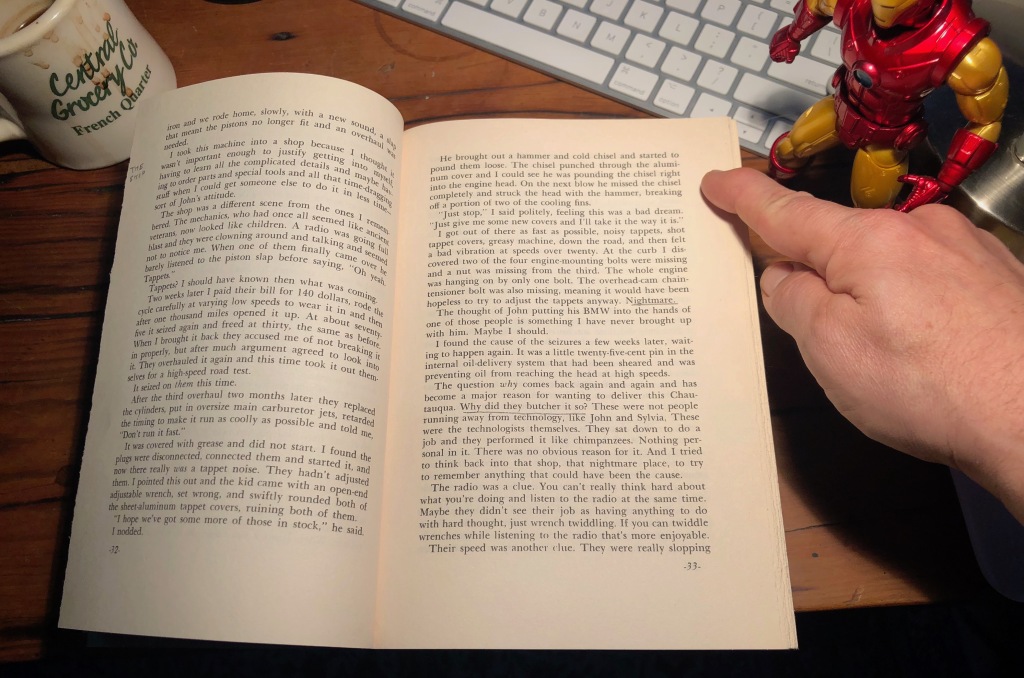
“Just stop,” Pirsig pleads at the wreckage. Labeling the whole thing “a nightmare,” he takes his bike home and starts to work on it himself, essentially beginning his meditation on motorcycle maintenance and human values.
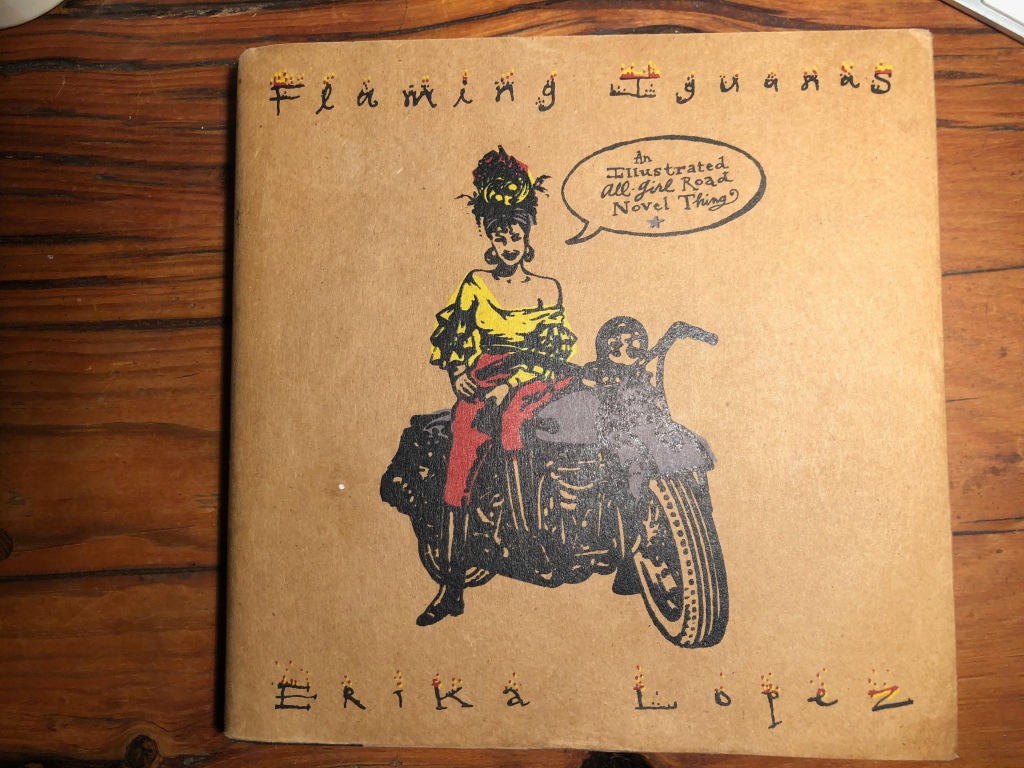
It was a good flight over to Ireland. Richelle booked us in economy plus, something I’d never done, and it’s nice. I brought along Erica Lopez’s Flaming Iguanas: An Illustrated All-Girl Road Novel Thing. I had been looking forward to reading Flaming Iguanas since Shelia Malone turned me on to it at last July’s International Journal of Motorcycles Studies Conference. Lopez’s story, or rather her character Tomato Rodriguez’s story, is of forming a one-woman motorcycle club—The Flaming Iguanas, a title she sets out to embroider on the back of her jacket but only gets through “FLAM,” the leather being such a pain in the ass to stitch.
In Flaming Iguanas, Lopez/Rodriguez gets gifted a used bike and, after a quick ride around the block, embarks on a cross-country trip from Philadelphia to San Francisco. The book is illustrated with rubber stamp art. My copy is printed on a thick brown paper stock. It’s a nice object and a good read.
Flaming Iguanas is freewheeling and irreverent but also knowing and honest. Lopez hits her marks, starting with Pirsig, the Luke Skywalker of all who would seek truth on two wheels and an engine:
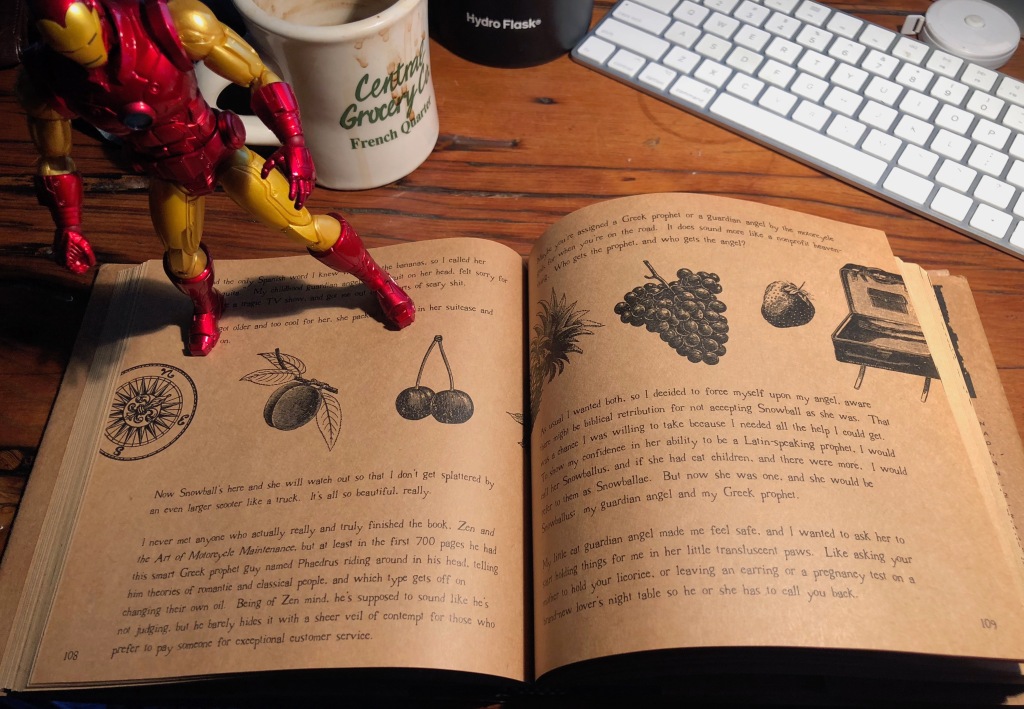
Lopez is right on the money: Pirsig labels the riding of motorcycles a Romantic endeavor and the working on them Classicist, but he can barely shield his contempt for the Romanticists.
I’m pure Romantic. Sure, I’ve adjusted valves and changed oil. And you couldn’t ride Italian motorcycles through the eighties without diagnosing a few electrical problems at the side of the road. But motorcycle maintenance has never been a major part of the experience for me. My problem is that, like everything, I overthink the task at hand and always end up frustrated, tightening some poor oil drain plug to beyond an inch of its life in search of the profound truth about “tightness.”
The week before last the Colorado roads were still clear, and I rode the Ducati up to the Harley shop to see what kind of customer service the Big Ol’ Girl, as I am now calling her, was getting.
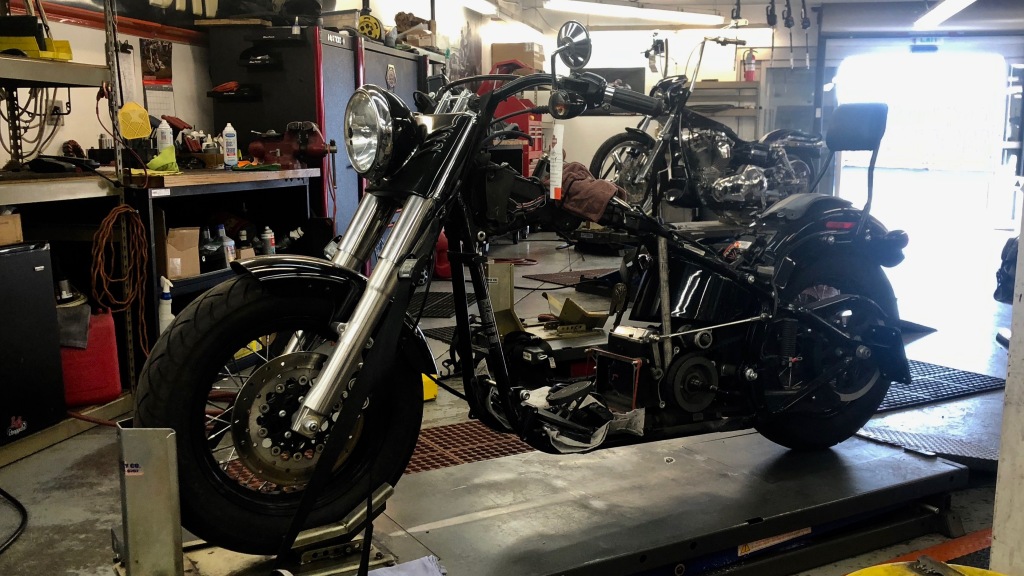
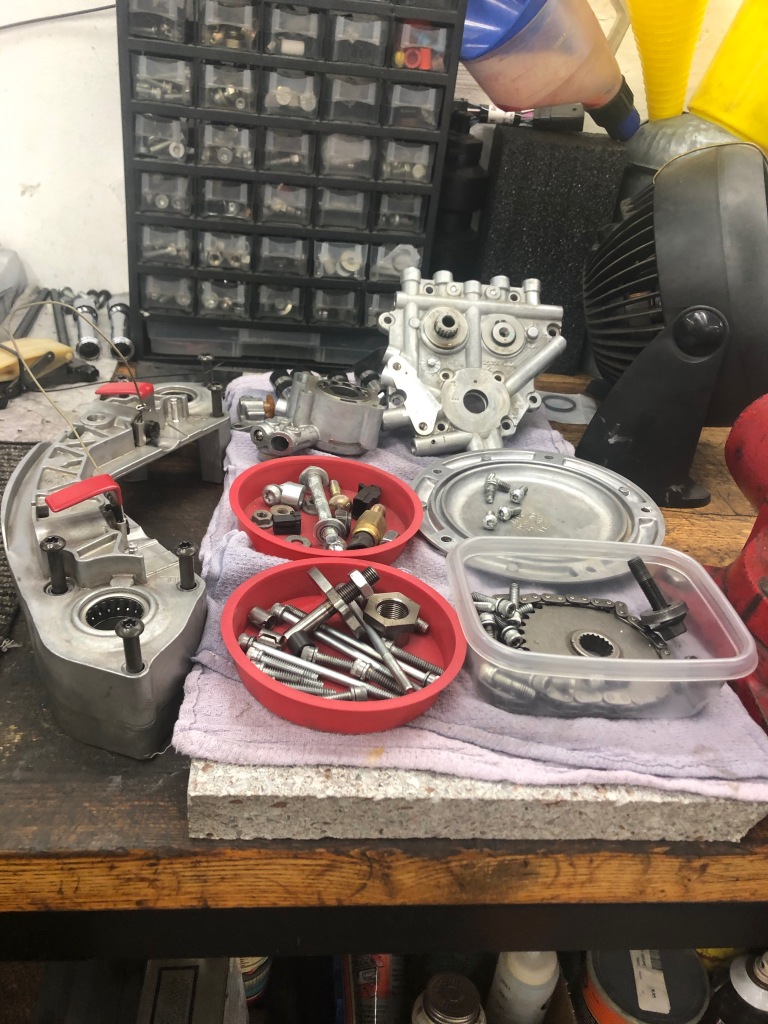
The Big Ol’ Girl is in pieces, her engine completely out of her frame, its parts laid out on a workbench. The tappets, cams, and even the counterbalancers—the weighty pieces of metal that rock back and forth to neutralize the vibrations from the big pistons—had their plating worn away. The stator—which converts rotation into electrical current had begun to unwind. I ran my hand inside the cylinder and felt a long crease inside the bore, where it is supposed to be smooth. So much has to be replaced that we had really better call it “rebuilt.”
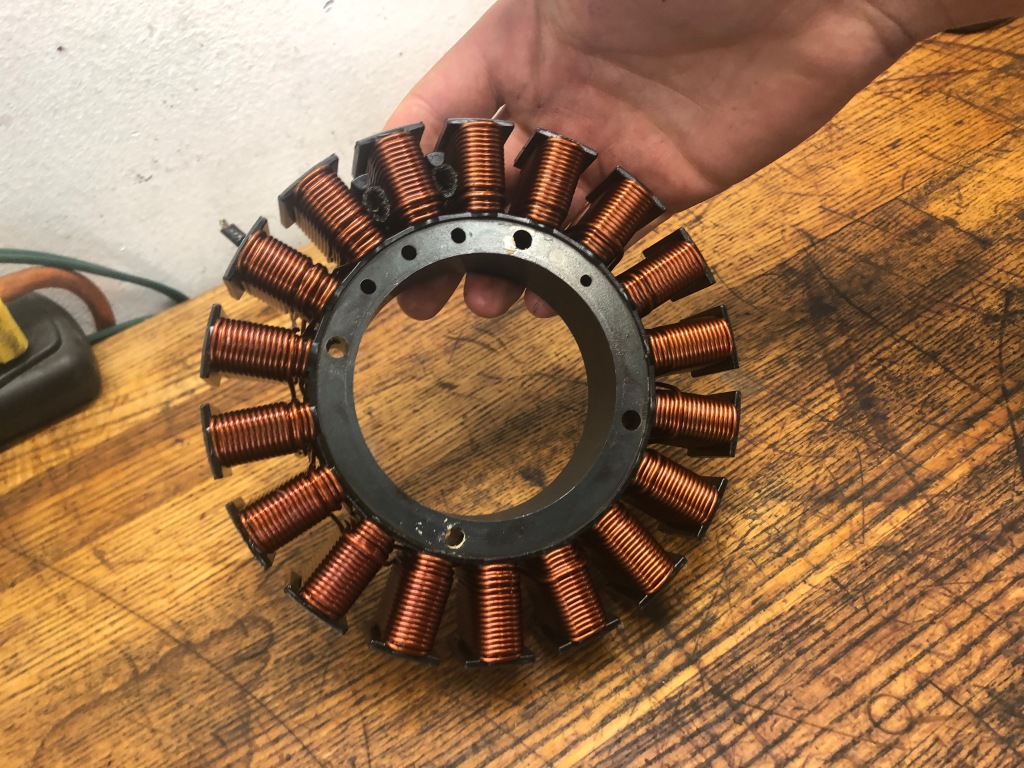

Predictably, I’ve decided to go big: high-capacity oil pump, heavy-duty cam plate, and hardened racing tappets will go inside. New 117ci cylinders and pistons will give her a bigger displacement than my first car and equal to my first pick-up truck. The crankshaft and flywheel are being welded together so they can never again get divorced (that, in fact, is what is taking so much time). The heads are already polished better than new. The engine cases are being machined to mount what is called a Timken bearing on the left side so that the crank will be more fully braced, left and right sides.
Harleys are supposed to be simple, and it’s hard not to see that in the pieces laid out on the workbench. They are big and blocky, clunky even. That feeling of simplicity in design permeates the whole machine, creating its character. The best explanation anyone has come up with for my bike’s utter failure is that Harley has simply lowered its standards, those clunky pieces are less well made. It’s sad, and I hope that the Big Ol’ Girl will have even more character after her surgeries.
Strangely, for all their talk about motorcycles, Pirsig and Lopez are both silent about the motorcycles they actually ride.

The internet reveals Pirsig rode a Honda CB77 Super Hawk and has a lot of pictures of him and his son crowded on the little 305cc Honda with all their gear. The Super Hawk was Honda’s first sportbike. Elvis rode one in Roustabout, an attempt to make him more friendly and appealing (Remember: You meet the nicest people on a Honda). The Super Hawk is iconic and changed motorcycling forever.
It’s harder to figure what Lopez rode on her trip. She refers to her bike as a Kawasaki at one point, but all her rubber stamps are of old Harleys or Vincent Black Shadows.
I think the absence motorcycles in these two motorcycle books creates a larger sense of isolation, a sense of aloneness if not straight-out loneliness, throughout their pages.
For Lopez that that sense of aloneness is captured in FLAM, in her incomplete embroidery, her motorcycle club of one, itself an expression of her hybridity as a Puerto Rican American, as bisexual, and as abandoned by various people—her traveling companion, her father.
Pirsig’s isolation is all the more tragic and fractured, shadowed by his nervous breakdown, his electroshock therapy, his divorce, his distant and scolding relationship to his son, who was killed in a mugging years later.
Perhaps it’s part and parcel of motorcycling—that sense that even with a passenger, it’s a solitary activity. I may be pushing it—if I confess, I am past my first glass of red—but when I ride, there is a lot of talk with the particular motorcycle I am riding. Promises are made, deals are struck, and mile markers are bartered for future oil changes and special lubrication services. Navigation errors and breakdowns at the side of the road are shared as joint failures. Character, and its flaws, human and mechanical, are itemized. Neither Lopez nor Pirsig engage in any of this personification nonsense and because of that the books read as solitary at heart.
I rode back from the Harley shop feeling badly for Big Ol’ Girl but relishing Il Mostro’s amazing speed. I’m still afraid to really twist the right grip back quickly, but even my tentative half rotation brings up 110mph more quickly than anything I’ve ever ridden. The sense of acceleration is so powerful that it messes with my perception of time.
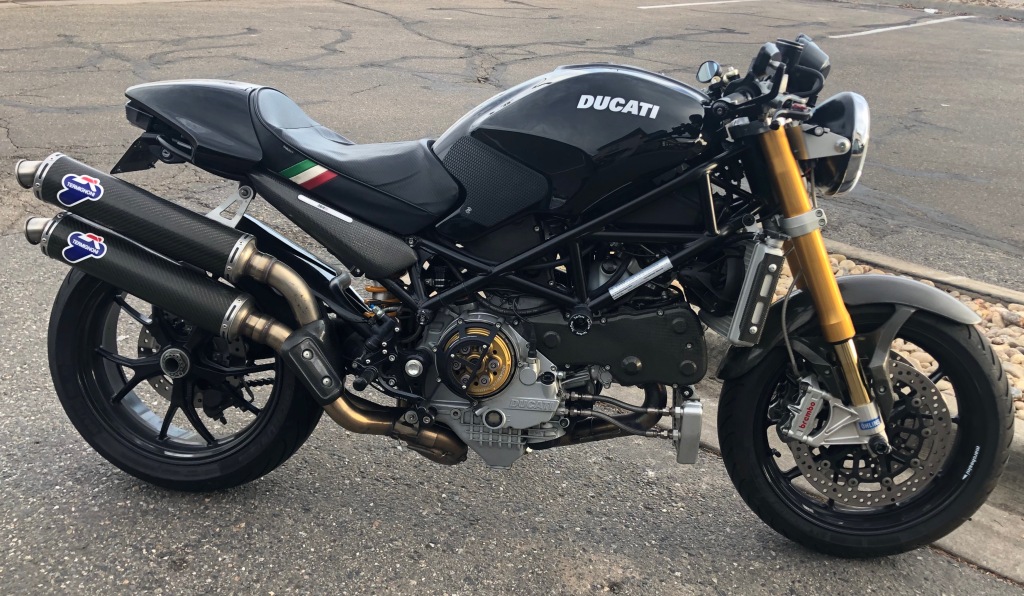

Sadly, as I sped along, the metal tang on my much-beloved courier bag danced across the paintwork on the tail piece. I don’t know what to say about my relationship with the Ducati. The fact is that in beginning to ride her as she was meant to be ridden, I ended up scaring my Italian beauty.
Suffice it to say, togetherness is a wonderful thing. It is the only thing that fortifies us from the ineffable tragedy of the human condition—our subjective experience of reality that insists on our fundamental aloneness, our inability to truly know one another, let alone ourselves in our darkest of moments. To that, we have Thanksgiving, we have family, we have moments at which we pause our hard ride through chronological time and sit together to reflect on what was and what can still be.
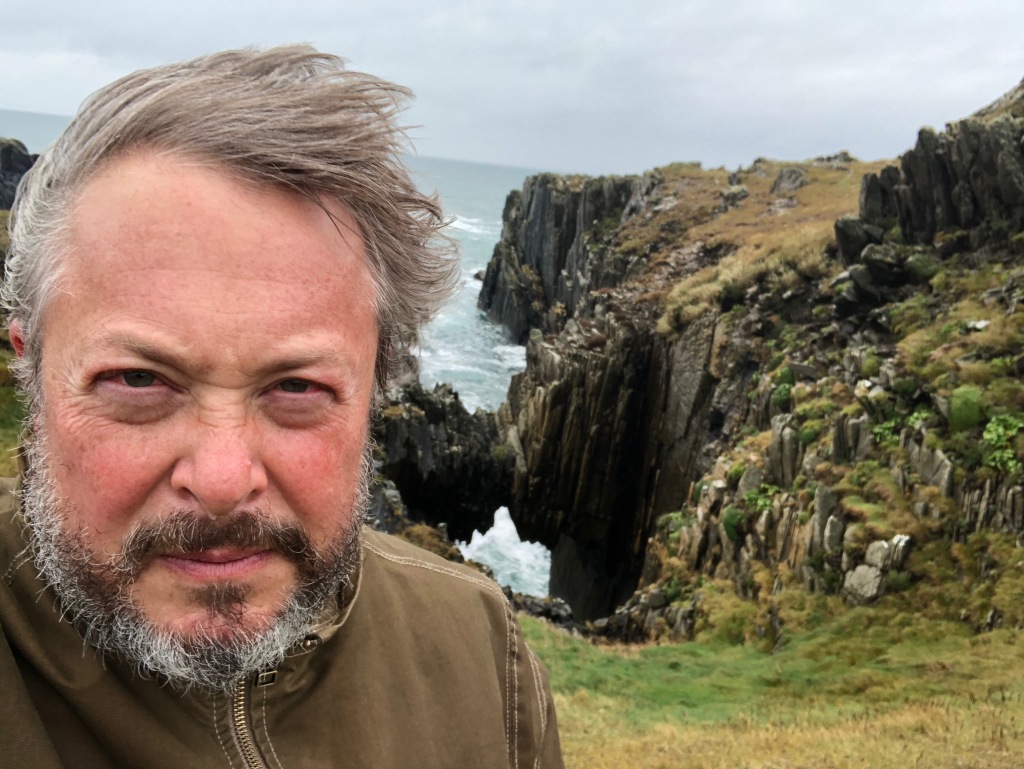
Happy Thanksgiving.
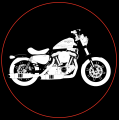
What a beautiful read. And I don’t even have a motorcycle. And yes, you have a strangle resemblance to that Jedi fellow.
LikeLike
Thanks so much! One never knows how it will go over.
LikeLike
That piece ran hotter than your Ducati’s engine on low oil! A feast for the holiday, indeed.
LikeLike
Thanks so much, Bronson! Have a great weekend!
LikeLike
Great story and descriptions, William. I’m not that much into motorcycles but your writing grabs me…
Love the pic I. Ireland.
Shared your blog with two of my friends who love bikes and have no understanding of my lack of interest. 😊 Happy Thanksgiving back!
LikeLike
Thanks. It’s such a pleasure to have people respond. Motorcycles, ultimately, are about stories and reflecting. Can’t wait to get that bike back and generate some new stories!
LikeLike